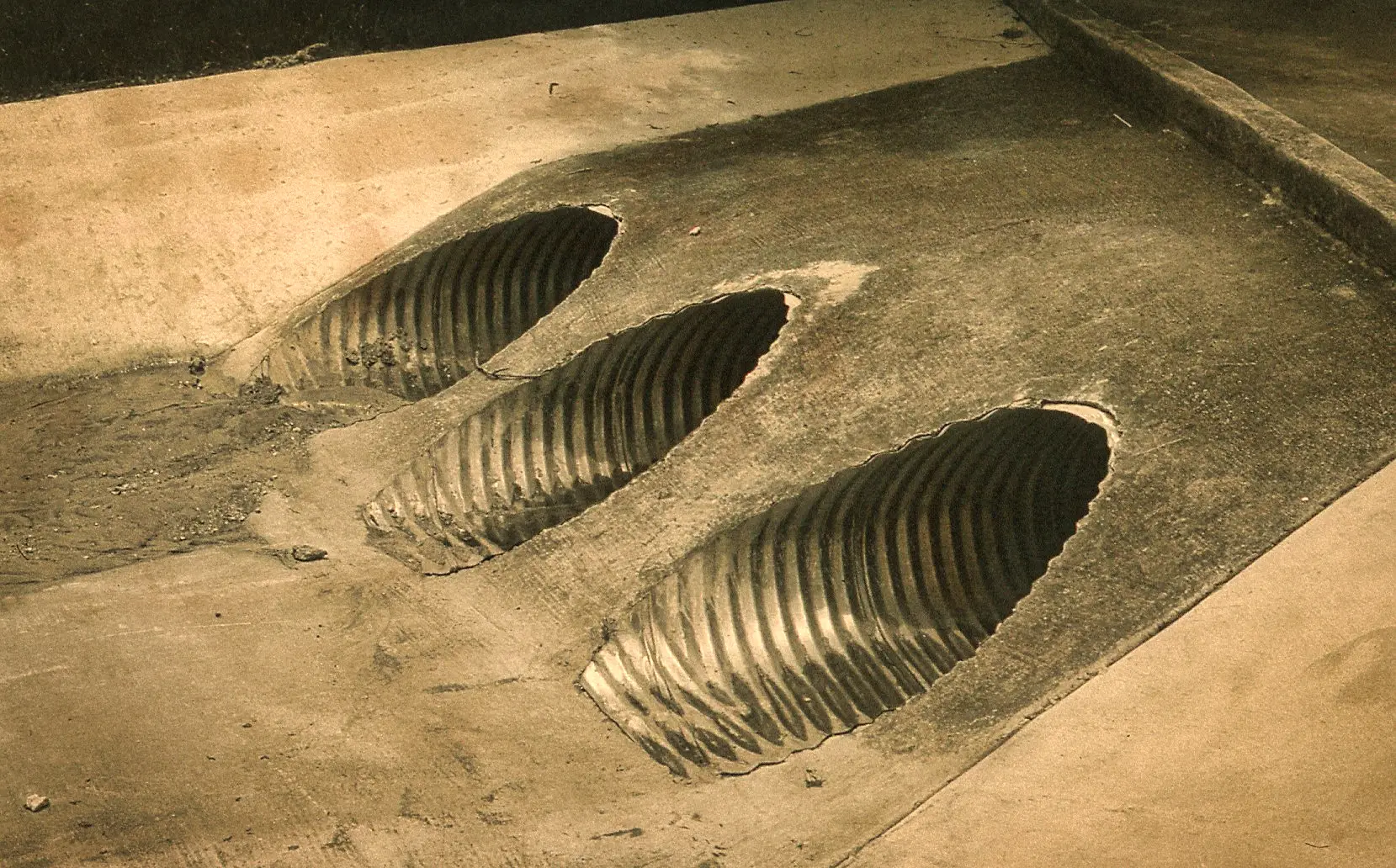What if you could develop and fix film using only products from the grocery store?
What if some supernatural event caused every brick-and-mortar photography store to disappear in a puff of silver? What if you needed to develop film on the very same day, just about anywhere in the world, and couldn’t wait for chemistry to be delivered?
The idea began to nag at me a few weeks ago. I had only just learned about reversal processing, making a positive filmstrip instead of negatives, and the high price tag and hazardous materials of the kits to do it had me looking for alternatives.
At the time, I wasn’t even quite sure how the reversal process was accomplished. How do you switch what was exposed to light and what wasn’t? I might have just chalked it up to voodoo magic and moved on, but the desire to actually perform the process and satisfy my curiosity impelled me to do a bit of research. And doing so gave me a much broader understanding of development overall.
So, let’s break it down. Film is exposed to light. The silver halide crystals struck by that light become tiny seeds of metallic silver. Developer grows those crystals, so what was hit by light becomes black silver metal. Fixer dissolves the remaining silver halides. And voila, you have a negative image. If you are on this site in the first place, this is likely not news to you.
Where the reversal process differs is merely in the addition of a step. You develop the silver crystals as usual, but then… You dissolve them. You remove anything that had been struck by light from the film, as if you used an inverted fixer. But then you have nothing but unexposed silver halides on the film. How are you supposed to develop it?
You do something that feels very wrong.
You expose the film in the middle of the development process.
Now you have film that only contains exposed silver halides, which simply need to be developed. Having removed anything that was struck by light initially, the areas that usually would appear black in the finished product, you will instead turn the areas that usually appear transparent into black. You’ve created a positive image.
That’s all well and good, but how do you go about dissolving silver in the first place?
Oh. Sulfuric acid.
I nearly abandoned the entire idea, but still fascinated by the concept, I kept researching to see if others had found ways to do it that didn’t require anything terribly caustic. And of course, they had.
There were a few photographers that had bought bulk chemicals to create the chemistry needed to dissolve the metallic silver (a mixture confusingly called “bleach;” no relation), with varying degrees of safety hazards. One mentioned, almost in passing, that a heated mixture of hydrogen peroxide and vinegar would actually accomplish the goal, but that it caused tinted film and potential reticulation. He discounted the idea on that basis.
But frankly, this was a completely impractical process for me to be doing in the first place. I was not making slides. It was the joy of the experimentation that I wanted to experience. Tinted film and reticulation? Let’s call that “style.”
Before the day was done, I had spent three whole dollars on supplies and created my first reversal film.

I was so excited at my results that I posted a quick video to the Vintage Camera Users Facebook Group to offer to teach anyone that was curious about the process how to do it themselves, for 2.5% of the price needed to buy a kit, and with even less of the potential dangers to self or environment. There were several photographers that were at least curious, and that was all I needed to give it another shot, recording the process. A few even tried it, to my everlasting elation.
Here’s the process, developing in a Patterson tank:
1. Develop your film at +1 stop to make a fairly dense negative, then pour your developer into a temporary container.
2. Wash your tank, and pour in a ratio of 1:16 vinegar/peroxide 3% (the bleaching mixture) at about 100 F, for 6 minutes, agitating constantly.
3. Pour out the bleaching mixture and wash your tank.
4. OPEN THE TANK AND EXPOSE THE FILM AGAIN. I held it up to a light for about 30 seconds.
5. Respool it back into your tank, and start over, developing and fixing as normal. You can use the developer from your temporary container again. And that’s it!
My horizons had been broadened, not just in what things worked, but why they worked. And the seed of an idea had taken root. This was something I could do with things from the grocery store. From any grocery store, anywhere. I felt empowered, given the chance to have a much greater say in the results of my film. And I wanted more…
_josh vickers
Follow me on Instagram and Facebook.
Share this post:









Comments
sonny rosenberg on Grocery Store Development – Part 1: Reversal Processing with Peroxide & Vinegar – By Josh Vickers
Comment posted: 27/05/2022
Comment posted: 27/05/2022
MichaelCook.tech on Grocery Store Development – Part 1: Reversal Processing with Peroxide & Vinegar – By Josh Vickers
Comment posted: 27/05/2022
I believe everyone should have the knowledge to manufacture, for themselves, the basic components of everything they use.
And this fits just nicely with that viewpoint! Looking forward to part 2
Comment posted: 27/05/2022
Matthias on Grocery Store Development – Part 1: Reversal Processing with Peroxide & Vinegar – By Josh Vickers
Comment posted: 27/05/2022
Comment posted: 27/05/2022
Bud Sisti on Grocery Store Development – Part 1: Reversal Processing with Peroxide & Vinegar – By Josh Vickers
Comment posted: 27/05/2022
Comment posted: 27/05/2022
Don Goodman-Wilson on Grocery Store Development – Part 1: Reversal Processing with Peroxide & Vinegar – By Josh Vickers
Comment posted: 27/05/2022
Comment posted: 27/05/2022
James Summers on Grocery Store Development – Part 1: Reversal Processing with Peroxide & Vinegar – By Josh Vickers
Comment posted: 27/05/2022
Comment posted: 27/05/2022
Comment posted: 27/05/2022
David Hume on Grocery Store Development – Part 1: Reversal Processing with Peroxide & Vinegar – By Josh Vickers
Comment posted: 28/05/2022
Comment posted: 28/05/2022
W.D. on Grocery Store Development – Part 1: Reversal Processing with Peroxide & Vinegar – By Josh Vickers
Comment posted: 30/05/2022
Comment posted: 30/05/2022
manelxy on Grocery Store Development – Part 1: Reversal Processing with Peroxide & Vinegar – By Josh Vickers
Comment posted: 23/11/2022
Any difference in the process?
I am beggining to do pinhole photography using paper as film.
Thanks in advance.
Comment posted: 23/11/2022
Comment posted: 23/11/2022
Comment posted: 23/11/2022
Comment posted: 23/11/2022
DAVID KALNY on Grocery Store Development – Part 1: Reversal Processing with Peroxide & Vinegar – By Josh Vickers
Comment posted: 11/02/2024